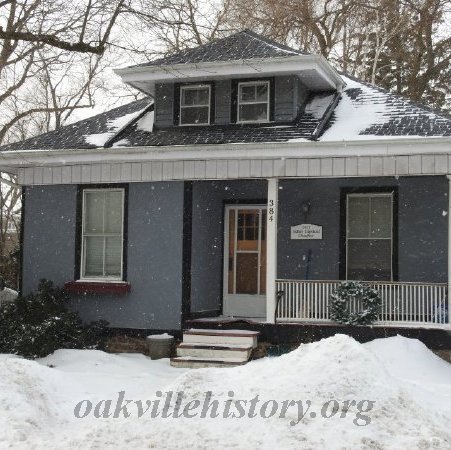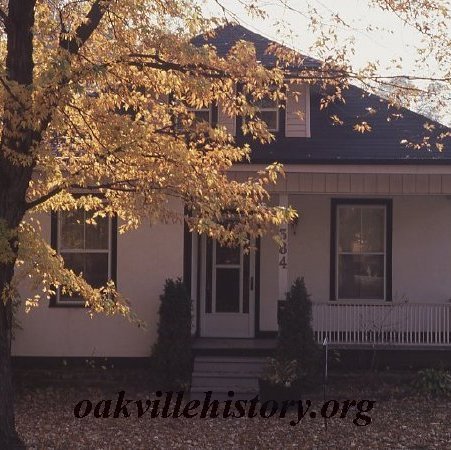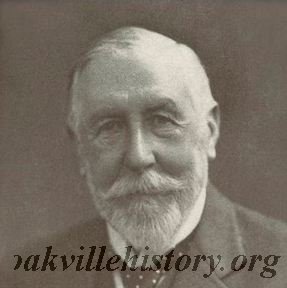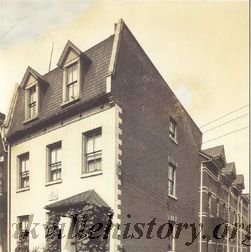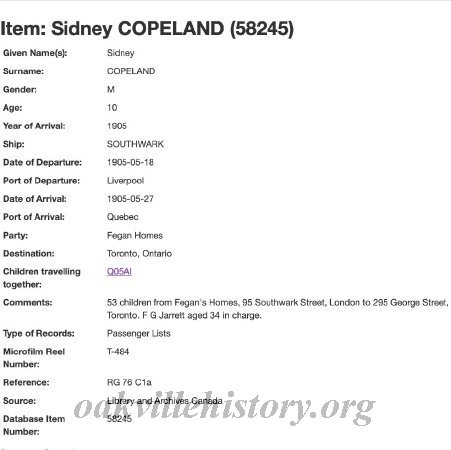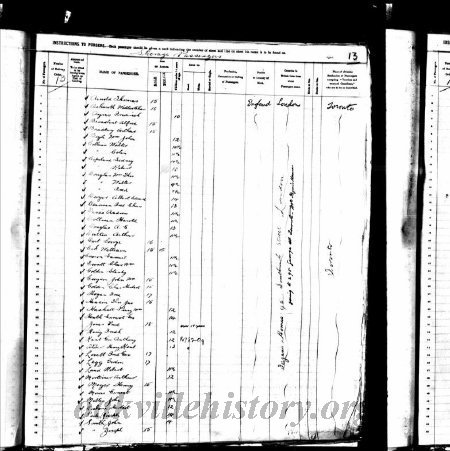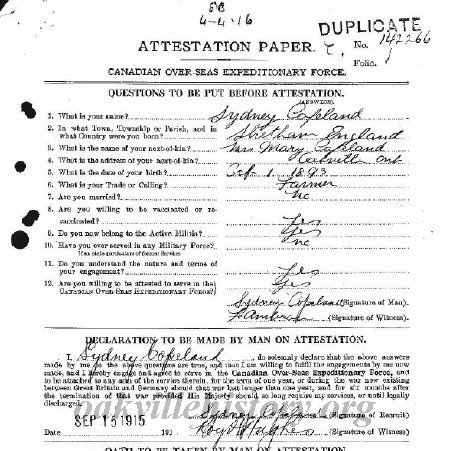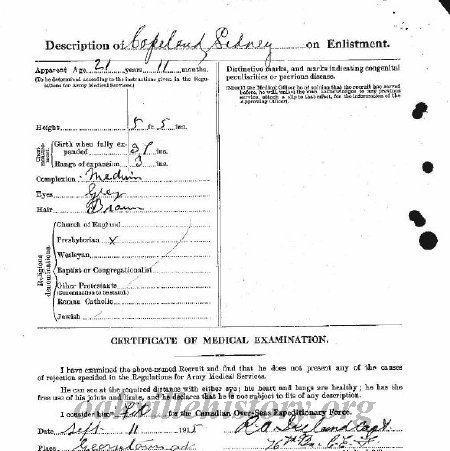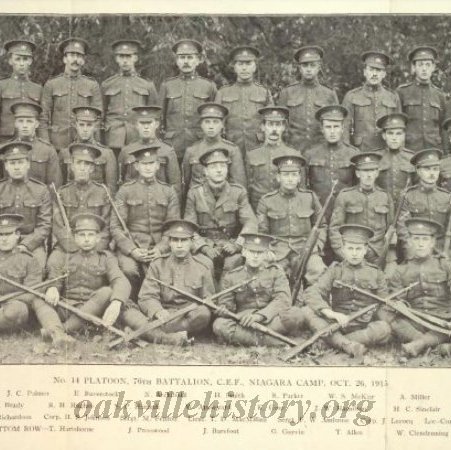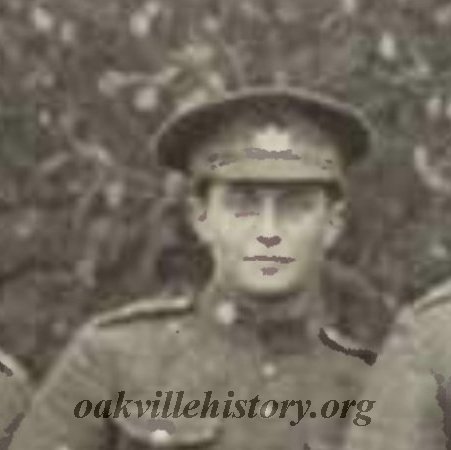Address:
384 Reynolds Street - The home of Sidney Copeland and Veta Louise Barham Copeland
Summary:
Sidney Copeland was a "Fagan Child," coming to Canada as a young boy together with his brother. He was a soldier in the First World War.
Property Details:
One of the interesting things about researching a house is learning about the people who once lived in them. They helped to shape our community and came from all walks of life.
Sidney Copeland was born in Streatham, England, south of London on Oct 1, 1893 to Charles Copeland & Mary Drew. He had an older brother named Robert, born in 1891. Life for the Copelands at the end of the Victorian Era in England was desperate, as the boys spent time in the Southwark Workhouse during the early 1900's. The workhouse was the last resort for those living in poverty and many found themselves at their mercy on and off throughout their lives. This particular workhouse was thought to have been the model for Charles Dickens' tale "Oliver Twist". When Dickens was young he lodged on a nearby street and would have seen the pauper children about the workhouse.
Sidney and his brother Robert were discharged in the fall of 1902 and spent just a week at school before joining the hordes of urchins eking out a hand to mouth existence on the filthy streets and alleyways of London, England.
Their luck changed, however, when they were rescued from those streets by a man named James William Fegan who was the founder of Fegan Homes. Being aware of the terrible living conditions of the poor children on the streets of London he opened several homes to train boys to live a better life. So it was in 1905, that Sidney and his brother Robert found themselves on a ship bound for Canada where Fegan had established a boys home at 295 George St., Toronto.
It is unknown where the brothers were eventually placed after they arrived in Canada, but records show that in 1915 Robert Copeland was married at St. Jude's in Oakville, his brother Sidney a witness to the event. Robert eventually moved to Simcoe where he bought a house and raised a family.
Sidney, however, decided that his life of adventure was not quite over yet so in the fall of 1915 he joined the Canadian Expeditionary Force and found himself back overseas, this time fighting in the fields of France. On Sept 22, 1916 he suffered a gunshot wound to his left knee and spent time in a field hospital in Boulogne before being patched up and sent back to the front. Almost two years later on August 9, 1918 he was struck again by a gun shot wound to his left elbow. He was transferred to Graylingwell War Hospital in Chichester, England and fortunately didn't make it back to the front before the armistice was signed.
Sidney crossed the ocean once again on December 30, 1918, this time choosing Canada as his home, having fought for her in the Great War. In 1921 he purchased his house at 384 Reynolds Ave., married Veta Louise Barham in 1923 and had a son Clifford a couple of years later. His occupation was that of "chauffer", likely due to the lingering war wound to his elbow. The family spent over 20 years in Oakville before selling in November 1942 and moving to Mount Forest, Ontario where he died in 1971 at the age of 78.
From the alleyways of London to the fields of France, Sidney Copeland lived a remarkable life of resilience, bravery and loyalty to his new country. Oakville should be proud to display his name on the house where he once lived.
Sidney Copeland was born in Streatham, England, south of London on Oct 1, 1893 to Charles Copeland & Mary Drew. He had an older brother named Robert, born in 1891. Life for the Copelands at the end of the Victorian Era in England was desperate, as the boys spent time in the Southwark Workhouse during the early 1900's. The workhouse was the last resort for those living in poverty and many found themselves at their mercy on and off throughout their lives. This particular workhouse was thought to have been the model for Charles Dickens' tale "Oliver Twist". When Dickens was young he lodged on a nearby street and would have seen the pauper children about the workhouse.
Sidney and his brother Robert were discharged in the fall of 1902 and spent just a week at school before joining the hordes of urchins eking out a hand to mouth existence on the filthy streets and alleyways of London, England.
Their luck changed, however, when they were rescued from those streets by a man named James William Fegan who was the founder of Fegan Homes. Being aware of the terrible living conditions of the poor children on the streets of London he opened several homes to train boys to live a better life. So it was in 1905, that Sidney and his brother Robert found themselves on a ship bound for Canada where Fegan had established a boys home at 295 George St., Toronto.
It is unknown where the brothers were eventually placed after they arrived in Canada, but records show that in 1915 Robert Copeland was married at St. Jude's in Oakville, his brother Sidney a witness to the event. Robert eventually moved to Simcoe where he bought a house and raised a family.
Sidney, however, decided that his life of adventure was not quite over yet so in the fall of 1915 he joined the Canadian Expeditionary Force and found himself back overseas, this time fighting in the fields of France. On Sept 22, 1916 he suffered a gunshot wound to his left knee and spent time in a field hospital in Boulogne before being patched up and sent back to the front. Almost two years later on August 9, 1918 he was struck again by a gun shot wound to his left elbow. He was transferred to Graylingwell War Hospital in Chichester, England and fortunately didn't make it back to the front before the armistice was signed.
Sidney crossed the ocean once again on December 30, 1918, this time choosing Canada as his home, having fought for her in the Great War. In 1921 he purchased his house at 384 Reynolds Ave., married Veta Louise Barham in 1923 and had a son Clifford a couple of years later. His occupation was that of "chauffer", likely due to the lingering war wound to his elbow. The family spent over 20 years in Oakville before selling in November 1942 and moving to Mount Forest, Ontario where he died in 1971 at the age of 78.
From the alleyways of London to the fields of France, Sidney Copeland lived a remarkable life of resilience, bravery and loyalty to his new country. Oakville should be proud to display his name on the house where he once lived.
Click to Enlarge
